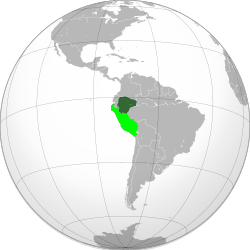
The history of Peru spans 15 millennia, extending back through several stages of cultural development along the country's desert coastline and in the Andes mountains. Peru's coast was home to the Norte Chico civilization, the oldest civilization in the Americas and one of the six cradles of civilization in the world. When the Spanish arrived in the sixteenth century, Peru was the homeland of the highland Inca Empire, the largest and most advanced state in pre-Columbian America. After the conquest of the Incas, the Spanish Empire established a Viceroyalty with jurisdiction over most of its South American domains. Peru declared independence from Spain in 1821, but achieved independence only after the Battle of Ayacucho three years later.

Leticia is the southernmost city in the Republic of Colombia, capital of the department of Amazonas, Colombia's southernmost town and one of the major ports on the Amazon river. It has an elevation of 96 meters (315') above sea level and an average temperature of 27 °C (80.6 °F). Leticia has long been Colombia's shipping point for tropical fish for the aquarium trade. Leticia has a population of 33,503 located on the left bank of the Amazon river at the point where the borders of Colombia, Brazil and Peru meet in an area called Tres Fronteras.

Óscar Raymundo Benavides Larrea was a Peruvian field marshal, diplomat, and politician who served as the 38th and 42nd President of Peru.

Iquitos is the capital city of Peru's Maynas Province and Loreto Region. It is the largest metropolis in the Peruvian Amazon, east of the Andes, as well as the ninth-most populous city in Peru. Iquitos is the largest city in the world that cannot be reached by road that is not on an island; it is only accessible by river and air.

Loreto is Peru's northernmost department and region. Covering almost one-third of Peru's territory, Loreto is by far the nation's largest department, slightly larger than Japan; it is also one of the most sparsely populated regions due to its remote location in the Amazon Rainforest. Its capital is Iquitos.

Maynas is one of the eight provinces in the Loreto Region in northeastern Peru. Its capital, Iquitos, is also Loreto's regional capital and the largest city in the Peruvian Amazon Rainforest.
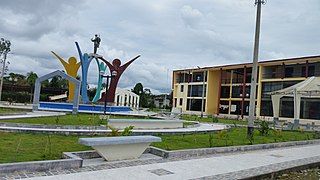
Sarameriza is a small fluvial port in the department of Loreto. Its place is strategic since it is immediately after the Pongo de Manseriche and therefore it is the first navigable point on the Marañón River on the way to the Amazon River and therefore the city of Iquitos and the border with Brazil. It is located at: 4°33'58.34"S, 77°25'0.98"W, according to Google Earth.
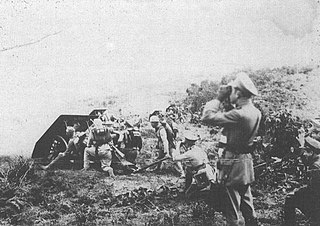
The Colombia–Peru War, also called the Leticia War, was a short-lived armed conflict between Colombia and Peru over territory in the Amazon rainforest that lasted from September 1, 1932, to May 24, 1933. In the end, an agreement was reached to divide the disputed area between both countries.
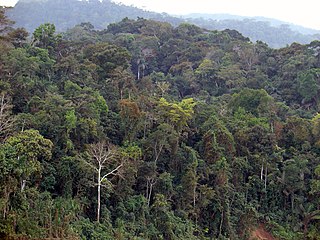
Peruvian Amazonia, informally known locally as the Peruvian jungle or just the jungle, is the area of the Amazon rainforest included within the country of Peru, from east of the Andes to the borders with Ecuador, Colombia, Brazil and Bolivia. This region comprises 60% of the country and is marked by a large degree of biodiversity. Peru has the second-largest portion of the Amazon rainforest after the Brazilian Amazon.

Allpahuayo-Mishana National Reserve is a protected area in Peru located southwest of Iquitos in the region of Loreto. It was established in 2004 to protect the diverse forest types in the area, especially the rainforests on white sandy soil and watercourses which provide drinking water to the city of Iquitos.
The Miss Perú 2009 pageant was held on April 4, 2009. That year, 22 candidates were competing for the national crown. The chosen winner represented Perú in Miss Universe 2009. The rest of the finalists would enter in different pageants.
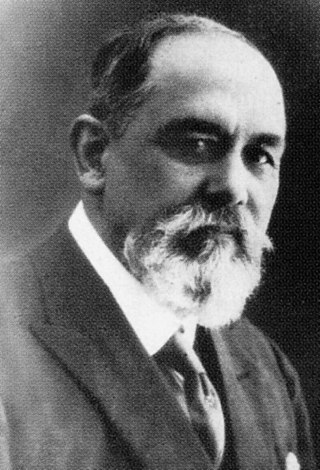
Julio César Arana del Águila, (1864–1952) was a Peruvian entrepreneur and politician. A major figure in the rubber industry in the upper Amazon basin, he is probably best known in the English-speaking world through Walt Hardenburg's 1909 articles in the British magazine Truth, accusing him of practices that amounted to a terroristic reign of slavery over the natives of the region. A company of which he was the general manager, the Peruvian Amazon Company, was investigated by a commission in 1910 on which Roger Casement served. He was appointed its liquidator in September 1911. He later blamed the downfall of the company on the British directors for neglecting to manage the Peruvian staff, of whom he was chief. Arana was the main perpetrator of the Putumayo genocide: where his company exploited and exhausted Indigenous populations to death, in exchange for rubber.
The cinema of Iquitos, also known as Amazonian cinema, is an important film development and one of the historic pioneering event of cinema of Peru. Due to the rubber boom and the arrival of foreigners, film interest began in the early 20th century, along with the evolution of cinema of the United States in Hollywood. Cinema in Iquitos had no established date of origin. The first film, however, was made in 1900. The first films were shown in the Casa de Fierro with an Edison machine, which reproduced the images using a carbide lamp and the constant movement of the operator. Iquitos is mentioned as a metonym of cinema in the Peruvian Amazon.
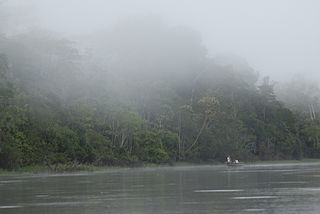
Tamshiyacu Tahuayo Regional Conservation Area is a protected area located south east of Iquitos, extending over the Peruvian department of Loreto, provinces of Maynas, Ramón Castilla and Requena. It was established by the Peruvian Ministry of Environment on May 15, 2009. The reserve is managed and funded by the Regional Government of Loreto.

The Federal State of Loreto was an unrecognised self-proclaimed federated state within Peru, that was proclaimed on 2 May 1896 during the Loretan Insurrection. It was formed from the Department of Loreto and existed as de facto autonomous region of the county. It was dissolved on 10 July 1896, after the rebellion was crushed by Peruvian forces. The state was proclaimed in order to gain more autonomy for the region as well as to reform Peru into a federal state. Its capital was Iquitos.

Loretan Insurrection of 1896 was a rebellion of the population of the Department of Loreto against the government of Peru, fought from 2 May 1896 to 10 July 1896. During the insurrection, the population demanded federalization of Peru, and the reformation of Loreto into the autonomous state, which lead to self-proclamation of Federal State of Loreto, de facto autonomous region within Peru. On 10 July 1896, the rebellion was defeated by the government forces and the Federal State was disestablished.

The Colombianization of Leticia, Putumayo and Caquetá is the name used to designate a process of transculturation or acculturation of the areas recognized under the sovereignty of Colombia, with the purpose of transplanting Colombian cultural traditions, in replacement of those cultivated in Peru.
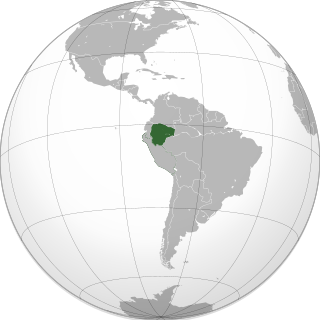
The Jungle Nation, also known as the Jungle Republic, was an unrecognised state, that existed between 1899 and 1900, in the modern territory of Peru, within the departaments of Loreto, San Martín, and Ucayali. It was proclaimed on 22 May 1899, by colonel Emilio Vizcarra, who then acquired the title of the Supreme Leader. The state was formed from the territory of Department of Loreto, Peru. It was reincorporated into Peru in 1900, shortly after the death of Vizcarra on 27 February 1900.

Guillermo Cervantes Vásquez was a Peruvian captain and leader of the Peruvian army who formed the group of Veterans of Caquetá that fought in the 1911 La Pedrera Conflict against Colombia, better remembered for his insurrection in 1921 where he proclaimed the Third Federal State of Loreto, one of many attempts to transform Peru into a federal state.
Pijuayal is a town in Pebas District, Mariscal Ramón Castilla Province, Loreto, Peru.
